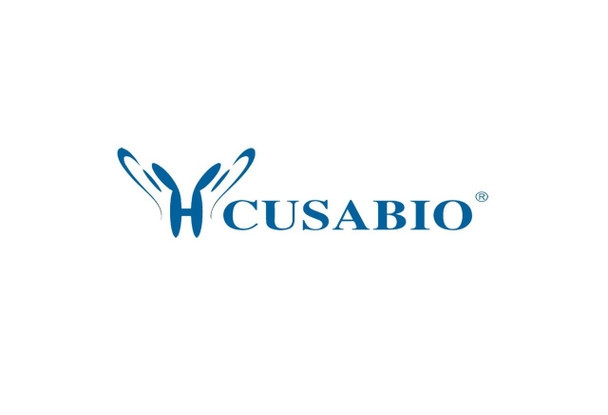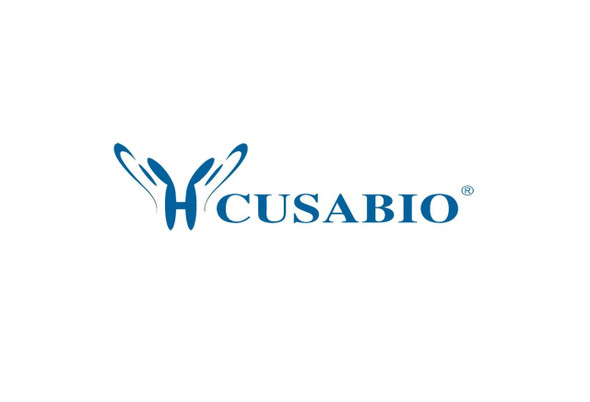Cusabio Human Recombinants
Recombinant Human E3 ubiquitin-protein ligase NRDP1 (RNF41) | CSB-EP880976HU
- SKU:
- CSB-EP880976HU
- Availability:
- 13 - 23 Working Days
Description
Recombinant Human E3 ubiquitin-protein ligase NRDP1 (RNF41) | CSB-EP880976HU | Cusabio
Alternative Name(s): RING finger protein 41
Gene Names: RNF41
Research Areas: Cell Biology
Organism: Homo sapiens (Human)
AA Sequence: MGYDVTRFQGDVDEDLICPICSGVLEEPVQAPHCEHAFCNACITQWFSQQQTCPVDRSVVTVAHLRPVPRIMRNMLSKLQIACDNAVFGCSAVVRLDNLMSHLSDCEHNPKRPVTCEQGCGLEMPKDELPNHNCIKHLRSVVQQQQTRIAELEKTSAEHKHQLAEQKRDIQLLKAYMRAIRSVNPNLQNLEETIEYNEILEWVNSLQPARVTRWGGMISTPDAVLQAVIKRSLVESGCPASIVNELIENAHERSWPQGLATLETRQMNRRYYENYVAKRIPGKQAVVVMACENQHMGDDMVQEPGLVMIFAHGVEEI
Source: E.coli
Tag Info: N-terminal GST-tagged
Expression Region: 1-317aa
Sequence Info: Full Length
MW: 62.9 kDa
Purity: Greater than 90% as determined by SDS-PAGE.
Relevance: Acts as E3 ubiquitin-protein ligase and regulates the degradation of target proteins. Polyubiquitinates MYD88. Negatively regulates MYD88-dependent production of proinflammatory cytokines. Can promote TRIF-dependent production of type I interferon and inhibits infection with vesicular stomatitis virus. Promotes also activation of TBK1 and IRF3. Involved in the ubiquitination of erythropoietin (EPO) and interleukin-3 (IL-3) receptors. Thus, through maintaining basal levels of cytokine receptors, RNF41 is involved in the control of hematopoietic progenitor cell differentiation into myeloerythroid lineages. Contributes to the maintenance of steady-state ERBB3 levels by mediating its growth factor-independent degradation. Involved in the degradation of the inhibitor of apoptosis BIRC6 and thus is an important regulator of cell death by promoting apoptosis. Acts also as a PARK2 modifier that accelerates its degradation, resulting in a reduction of PARK2 activity, influencing the balance of intracellular redox state. The RNF41-PARK2 pathway regulates autophagosome-lysosome fusion during late mitophagy. Mitophagy is a selective form of autophagy necessary for mitochondrial quality control
Reference: "Hypothetical protein SBBI03." Zhang W., Cao X., Wan T., Yuan Z., He L., Li N., Zhu X., Tao Q. Submitted (JUL-1998)
Storage: The shelf life is related to many factors, storage state, buffer ingredients, storage temperature and the stability of the protein itself. Generally, the shelf life of liquid form is 6 months at -20?/-80?. The shelf life of lyophilized form is 12 months at -20?/-80?.
Notes: Repeated freezing and thawing is not recommended. Store working aliquots at 4? for up to one week.
Function: Acts as E3 ubiquitin-protein ligase and regulates the degradation of target proteins. Polyubiquitinates MYD88. Negatively regulates MYD88-dependent production of proinflammatory cytokines. Can promote TRIF-dependent production of type I interferon and inhibits infection with vesicular stomatitis virus (By similarity). Promotes also activation of TBK1 and IRF3. Involved in the ubiquitination of erythropoietin (EPO) and interleukin-3 (IL-3) receptors. Thus, through maintaining basal levels of cytokine receptors, RNF41 is involved in the control of hematopoietic progenitor cell differentiation into myeloerythroid lineages (By similarity). Contributes to the maintenance of steady-state ERBB3 levels by mediating its growth factor-independent degradation. Involved in the degradation of the inhibitor of apoptosis BIRC6 and thus is an important regulator of cell death by promoting apoptosis. Acts also as a PRKN modifier that accelerates its degradation, resulting in a reduction of PRKN activity, influencing the balance of intracellular redox state. The RNF41-PRKN pathway regulates autophagosome-lysosome fusion during late mitophagy. Mitophagy is a selective form of autophagy necessary for mitochondrial quality control
Involvement in disease:
Subcellular Location:
Protein Families:
Tissue Specificity: Detected in ovary, testis and prostate.
Paythway: Endocytosis
Form: Liquid or Lyophilized powder
Buffer: If the delivery form is liquid, the default storage buffer is Tris/PBS-based buffer, 5%-50% glycerol. If the delivery form is lyophilized powder, the buffer before lyophilization is Tris/PBS-based buffer, 6% Trehalose, pH 8.0.
Reconstitution: We recommend that this vial be briefly centrifuged prior to opening to bring the contents to the bottom. Please reconstitute protein in deionized sterile water to a concentration of 0.1-1.0 mg/mL.We recommend to add 5-50% of glycerol (final concentration) and aliquot for long-term storage at -20?/-80?. Our default final concentration of glycerol is 50%. Customers could use it as reference.
Uniprot ID: Q9H4P4
HGNC Database Link: HGNC
UniGene Database Link: UniGene
KEGG Database Link: KEGG
STRING Database Link: STRING
OMIM Database Link: N/A









